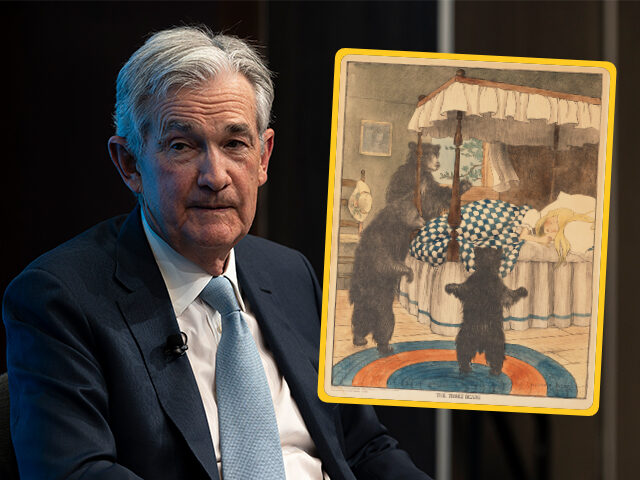Goldilocks may be in for a bout of indigestion.
At first glance, the Commerce Department’s report on personal income and spending in October looks like what some people have referred to as Goldilocks data. Consumer spending was higher than expected; and inflation, particularly core inflation, was lower than expected. In other words, it was a “just right” report, neither too hot nor too cold.
First among those gushing about the report was the Biden White House.
“Today, we learned that inflation moderated and incomes grew in October, following yesterday’s news that our economy grew at an even stronger pace from July to September than we previously thought. We are seeing initial signs that we are making progress in tackling inflation, even as we make the transition to more steady, stable economic growth. That’s good news for the American people, and further evidence that my economic plan is working,” the White House said in a statement Thursday.
Unfortunately, a bit of scrutiny will send Goldilocks out the window and fleeing into the woods. We already knew that consumer spending was high in October based on the blowout in retail sales. This was dutifully described as a sign of a resilient consumer boldly defying high prices, rising interest rates, and a looming recession. We warned that the reality was likely a bit less cheerful: consumers were likely doing a good part of their shopping early in light of ongoing month-to-month price hikes.
Spending was up by 0.8 percent for the month while the Personal Consumption Expenditures (PCE) price index rose 0.3 percent. Core PCE inflation rose by just 0.2 percent. This implies that after adjusting for inflation, spending rose by a solid 0.5 percent. Perhaps the best evidence that early holiday shopping played a strong role here is that real spending on durable goods rose 2.7 percent, above the nominal rise of 2.1 percent. That’s because prices of durable goods fell 0.6 percent, which is explained by early discounting by businesses. In other words, Black Friday began in October once again this year.
Analysts who ignore the role of holiday sales in holding down prices in the fourth quarter are likely to see a disinflationary trend building in the economy. The Federal Reserve—or at least some of its more dovish officials—may be prone to make the same mistake. But these numbers look like retailers have cleared out overstocked inventories, as retail inventories fell by 0.2 percent in October and the 0.4 percent September rise in inventories was revised into a 0.1 percent decline. The result is likely to be a surge in price measures once the holiday and post-holiday discounts are relaxed sometime in the first quarter of next year.
The October data likely does not look “just right” to Federal Reserve Chairman Jerome Powell. Although the stock market appears to be thrilled by each and every sign that inflation is coming down, Powell was dismissive of month-to-month changes in data in his remarks yesterday at the Brookings Institution. He knows that we’ve seen dips in inflation before which were then followed by surges. This spring we saw PCE inflation drop from one percent in March to 0.2 percent in April—a decline greeted by celebrations that inflation had peaked and the crisis was over. One month later, the PCE price index rose 0.6 percent and was up one percent again in June. Similarly, inflation fell to 0.1 percent in August only to rise back to 0.3 percent in September—where it has been ever since.
Powell is likely to see the personal spending news quite differently. The increase in both nominal and real spending means that the Federal Reserve’s attempt to cool demand is still not yielding results. In yesterday’s speech, Powell was quite explicit about his view of that aggregate demand needs to fall to contain inflation: “We are tightening the stance of policy in order to slow growth in aggregate demand. Slowing demand growth should allow supply to catch up with demand and restore the balance that will yield stable prices over time. Restoring that balance is likely to require a sustained period of below-trend growth.”
Needless to say, 0.8 percent month-to-month spending growth is not consistent with below-tend growth.
Similarly, nominal wage growth at 0.5 percent and real growth of 0.2 percent may come as a relief to workers who have been seeing their cost of living rise faster than incomes, but it is likely too hot for a Fed focused on bringing balance to the labor market.
Stronger growth now very likely means a higher terminal rate for the Fed and a delayed but deeper recession. Goldilocks will likely regret eating too much porridge over the holidays.

COMMENTS
Please let us know if you're having issues with commenting.